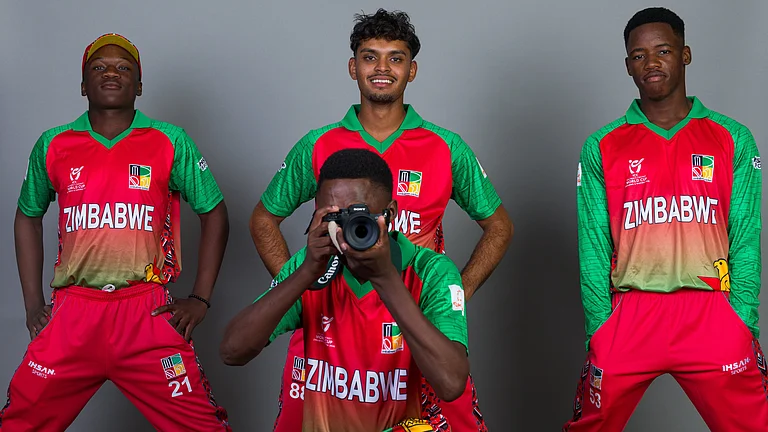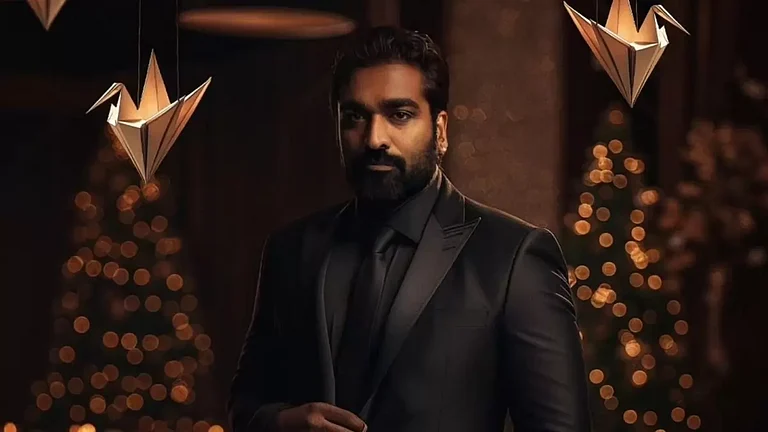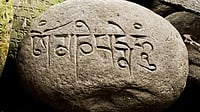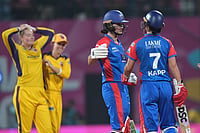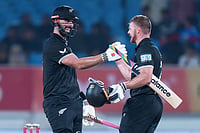Ruth Vanita's book 'Love’s Rite' was first published in 2005, when there was no movement for marriage equality in India. Penguin released a commemorative edition in 2022, with a new Preface.
The book discusses the many marriages and joint suicides between low-income, non-English-speaking young women from 1980 to the present. The couples are from all communities, including Dalits and tribals. The book also examines the legal, literary and religious history of same-sex unions in India from the ancient past to modern India. It argues that the words ‘bride’ and ‘groom’ in the Hindu Marriage Act and Special Marriage Act have historically not been exclusively female and male. It also looks at co-wifehood as a form of lifelong union between women.
The following consists of edited excerpts from 'Love's Rite':
The Kamasutra, a fourth-century sacred treatise on eroticism, categorizes humans into three groups – men, women, and those of the third nature (tritiya prakriti). It further classifies men of the third nature into those who are masculine-appearing and desire other men, and those who are feminine-appearing and also desire men. It describes the lives and activities of men of the third nature (the occupations of hairdresser, masseur, and flower seller are recommended to them as ways of meeting men), and gives a detailed and sensuous account of oral sex between men. Several ancient texts, including Sanskrit plays, Hindu medical texts and Jain texts, develop a taxonomy of those who are inclined to same-sex desire.nThe Kamasutra states that two menn friends who are each other’s well-wishers and havencomplete trust in each other may unite (II. 9. 36). The term used is parasparaparigraham.
Paraspara means ‘mutual’, and parigraha has many meanings, including “take in marriage,” “have sexual intercourse,” ‘take’, ‘accept’, or ‘seize’. Danielou translates it as ‘get married together’, two Hindi translators as ‘have oral sex together’, and Doniger as ‘do this service’ for one another.
I examined other uses of parigraha and its variants throughout the Kamasutra, and found that it is used eight times to refer to marriage; five times to mean ‘seize’, ‘accept’, ‘take’ or ‘obtain’; and six times to refer to copulation. There is only one other use of parigraha along with paraspara. Parasparaparigrahayoha (V.4: 41) refers to a man establishing a mutual bond with another man’s wife. Paraspara (mutual) is also used along with “enjoyment” - parasparamranjayeyuhuhu (V.6: 1) refers to mutual sexual enjoyment between women in seclusion. Both these, like the reference to two men uniting, refer to unconventional types of union.
Most interesting are several uses of the word to refer to a woman acting like a wife parigraham cha charet and parigrahamkalpam (VI.5: 36 and VI.5: 4). These verses refer to a courtesan who behaves like a wife to a man who rewards her well. A courtesan’s daughter whose hand is taken by a man acts as his wife for a year (VII.1: 21-22), and the ceremony of taking her hand is termed panigrahanavidhi, which is also used in other texts to refer to marriage.
So, to return to the verse that describes two men mutually uniting, the term parigraha there refers to mutual intercourse, but also carries the connotation of a union or a bond of mutual acceptance, such as taking someone in marriage. It is important that this verse terms the two men nagaraka, that is, they are definitely not persons of the ‘third nature’ but are men of the type constructed as normative in the text.
*****************
Joint suicide, whether by cross-sex or same-sex couples, is a public statement ofc ommitment. From 1980 onwards, suicide notes left by many same-sex couples state that they cannot live without each other and they hope to be husband and wife in the next life. The idea that no one can separate those destined to be together is an ancient and powerful one. The doctrine of karma, whereby actions in a former life shape the present life, is often misunderstood as causing fatalism. In fact, the doctrine is a dynamic one, since actions in the present life shape the next life. Karma and rebirth are thus invitations not to passivity but to action. Fidelity to an attachment, even if thwarted in this life, may result in its consummation in the next.
At the personal level, the theory of rebirth functions to reassure individuals that their socially illicit feelings are justifiable. Hindu texts repeatedly insist that love is a force that cannot be contested.
In the 11 th-century Sanskrit Kathasaritsagara, Pulindaka feels immense affection for. another man, Vasudatta, the moment he sees him and therefore tries to sacrifice his life for him. They live together (Vasudatta marries, Pulindaka does not) and when Vasudatta dies, both his wife and Pulindaka commit suicide to be with him. The text explains the two men’s feelings thus: ‘Vakti janamaantarapritim manah snihyadakaaranam (Affection [that arises] in the heart without a cause speaks of love [persisting] from a former birth).
In the Kathasaritsagara, a girl, Kalingasena, wonders why her heart is agitated by love (snehakulamanaha) for another female, Somaprabha, and decides that they must have been friends in a former life. A woman’s intimate female friend is called her swayamvarasakhi and a man’s intimate male friend his swayamvarasakha...
****************
In a number of 14th-century texts produced in Bengal, such as the Sanskrit (written in Bengali script) Padma Purana and some versions of the Bengali Krittivasa Ramayana, two co- widows, Chandra and Mala, make love and, due to divine plans and blessings, one of them becomes pregnant and produces a child, who is the hero Bhagiratha.
Bhagiratha’s mothers’ relationship is represented as a marriage-like union in the following ways:
1. As co-wives and co-widows, they are in a lifelong union with one another.
2. In the Bengal Padma Purana, the family priest performs a putreshti sacrifice (to get a son) for them, before they have sexual relations. This sacrifice is normally performed, even today, only for a married couple.
3. In two versions of the Krittivasa Ramayana, the Gods plan, bless and oversee their sexual relationship. The match between them is literally made in heaven.
4. Like most of the non-English-speaking women whose marriages in India have been reportedbsince the 1980s, one woman acts as a wife and the other as a husband.
5. Their relationship results in the birth of a legitimate child, who is heir to the kingdom. These ancient ideas of same-sex union partly explain why many families came around to the idea of same-sex marriage and helped arrange their daughters’ weddings in the 1980s and early ‘90s, when it was not legal anywhere in the world...
When two policewomen, Leela Namdeo and Urmila Srivastava, got married in 1987, a neighbor, Sushila Bhawasar, who was a village schoolteacher, and a husband, also a schoolteacher, expressed indignation at the police authorities’ suspending the women from their jobs. Sushila said, ‘After all, what is marriage? It is a wedding of two souls. Where in the scriptures is it said that it has to be between a man and a woman?’
This remark is amazingly close in its philosophical assumptions to the reasoning of a Shaiva priest from India who performed the wedding of two Indian women in Seattle in 2002. He told me that on the basis of Hindu scriptures, ‘Marriage is a union of spirits, and the spirit is not male or female’.
Another, much better-known Hindu priest connected the argument of the ungendered spirit to the theory of rebirth. In her 1977 book, The World of Homosexuals, mathematician Shakuntala Devi recorded her interview with Srinivasa Raghavachariar, Sanskrit scholar and priest of the major Vaishnava temple at Srirangam in South India. Sri Raghavachariar said that same-sex lovers must have been cross-sex lovers in a former life. The sex may change but the soul remains the same in subsequent incarnations, hence the power of love impels these souls to seek one another.
The fact that a similar explanation was given by both Shaivite and Vaishnava priests and by a female schoolteacher in a village indicates the overarching cultural importance of these notions of the spirit retaining its attachments but not its gender through lifetimes. That these Indic notions help legitimize relationships that might otherwise be seen as illegitimate appears not just in these modern weddings but in some pre-modern texts, where parents and other authorities come around to approving young people’s socially inappropriate desire to marry.
One such story is that of a prince who falls in love at first sight with a beautiful and brave Chandala girl, and wants to marry her. The prince’s parents are perplexed when they see him pining away. His father, king Palaka, decides that the girl thinks that ‘without doubt she was the beloved of my son in a former birth, and this is proved by his falling in love with her at first sight’. King Palaka tells his wife, ‘The minds of the good tell them by inclination or aversion what to do and what to avoid’ (112).
This explanation calls into question the nature of ‘reality’. The king’s argument is based on the idea that attributes that appear real like cast, class and gender may not be ‘real’ because they change from one lifetime to another.
(Ruth Vanita is an Indian academic, activist and author who specialises in British and Indian literary history with a focus on gender and sexuality studies. She also teaches and writes on Hindu philosophy.)









